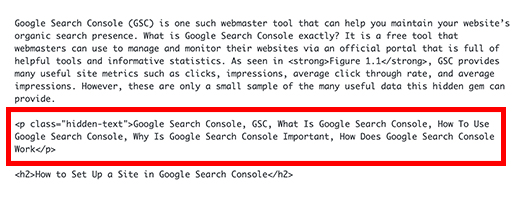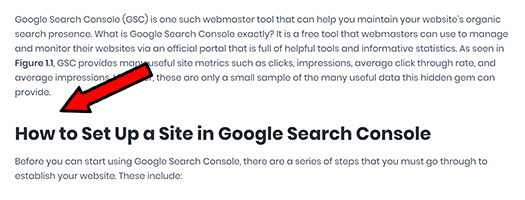In the most simple explanation, search engine optimization (SEO) is the practice of creating relevant content and optimizing websites in order to improve online visibility within search engine results pages (SERPs).
Performing SEO is a multi-faceted process, often requiring a variety of techniques and actions in order to successfully compete against others vying for the top positions within SERPs for targeted search queries. Organic SEO is quite similar to any activity which utilizes a ranking system to categorize participants based on their abilities and skill levels. However in most cases, these activities often include a clear set of expectations and requirements which are used to determine the order of rankings, Organic SEO does not have the same amount of transparency.
Although there is no official handbook outlining every signal which factors into the algorithms used within search engines, there are foundational SEO techniques and methodologies that have been confirmed by Google. These SEO guidelines are pretty black and white, and sometimes gray.
What Exactly is Black Hat SEO?
When it comes to SEO techniques, there are actually three distinct forms: white hat, gray hat, and black hat. These are terms used to classify the many different ways to utilize SEO in order boost traffic to a website or page. White hat SEO focuses on implementing SEO tactics designed for a human audience (not the search engines) and that are also in line with the approved terms and conditions of search engines.
Black hat, in sharp contrast, focuses on gaming the search engine algorithms to unfairly rank pages for keywords that are often unrelated to the page content. Furthermore, black hat SEO tactics may focus on manipulating website crawlers to increase website traffic instead of delivering quality content.
Gray hat SEO falls somewhere in the middle, implementing strategies that include both white hat and black hat methods. While those who use gray hat tactics may unintentionally or unknowingly violate some guidelines or ethical standards, they do not have the malicious intent that typical black hat users do.
Examples Of Black Hat SEO and Why They are Dangerous
Common examples of black hat SEO strategies include the use of invisible text, doorway pages, keyword stuffing, page swapping, or the addition of unrelated keywords to a page. Each of these techniques are defined below, with insight as to how they can be detrimental to any business website.
1. Invisible Text
Invisible text is any text that search engines can read, but users can not. This allows black hat users to target multiple keywords and improve SEO by concealing text onto the page. Most of the time, this invisible text contains additional keywords that are not reflected in the page copy, deceiving search engines into ranking those pages higher in the SERPs. Modern search engines are quick to notice this, however, since they are much more sophisticated and better at detecting spam tactics.
 Figure 1.1
Figure 1.1
 Figure 1.2
Figure 1.2
Figures 1.2 and 1.3 show an example of invisible text. Figure 1.2 display the HTML code for the page in WordPress with a class called ‘hidden-text,’ and Figure 1.3 shows how the class reflects on the page. It is programmed to disable users from seeing the copy while allowing search engine robots to read it.
One caveat: there is one instance where invisible text is okay and actually required by ADA compliance. Alternative (alt) text is technically a required form of invisible text embedded in pictures. This can create an audio-transcription which can be read to individuals who are blind so that they may understand what the picture is about.
2. Doorway Pages
Doorway pages are pages on a website that are loaded with keywords but have poor page content. These pages are designed to trick search engines into believing there is good quality content pertaining to the keyword on the page. Doorway pages are generally accompanied with invisible text to pull in users who are searching for multiple topics within a specific industry. Once again, search engines are now smart enough to detect how much time is actually being spent on the page, causing doorway pages to be de-ranked easily.
3. Keyword Stuffing
Keyword stuffing is the use of placing an unnecessary amount of keywords into page copy. This differs from keyword rich content in that the specific words are overused to the point that it becomes incoherent and unreadable for website users. For example, implementing a keyword five to six times throughout your content utilizes would be considered acceptable white hat SEO Using the same keyword five to six times in the same paragraph, however, would not only make for a terrible user experience, but would be flagged as spam.
 Figure 1.3
Figure 1.3
Figure 1.3 shows a keyword analysis from the popular WordPress optimization tool, Yoast SEO. The analysis is warning the user that the keyword density is almost double the recommended amount in their copy. To avoid accidental keyword stuffing, they should use variations of the keyword and/or similar terms. This can also provide benefits as it allows the page to potentially range for a cluster of keywords.
4. Page Swapping
Page swapping refers to allowing a page with white hat techniques to rank well in the SERPs, and then swapping it out with content from a less-optimized page. Users of this common black hat SEO technique will keep the page title, meta description, and URL the same to maintain its page ranking, but change the page content. They can then repeat this process to create multiple pages which rank high without having to invest in creating optimizing content. While it may seem like a way to gain quick website traffic with minimal effort, page swapping is considered a huge violation and can consequently result in search penalties.
5. Unrelated Keywords
Unrelated keywords are keywords that are stuffed into a page that have little to nothing to do with the content on the page. These unrelated phrases are designed to pull users from multiple searches onto their page even though the content itself may be completely irrelevant to their search. Unrelated keywords are generally paired with all of the aforementioned black hat techniques, making the use of unrelated keywords perhaps one of the most notorious of all black hat SEO methods.
What Are The Consequences Of Black Hat SEO?
 Search engines look out for specific black hat techniques when crawling and indexing a page. Most pages that show evidence of using these tactics are instantly de-ranked, with the possibility of domain penalties such as “domain blacklisting,” which that could prohibit your entire website from being displayed in the SERPs. Not only would this cause your website to be de-indexed by search engines, you would also inevitably lose the ability to send organic traffic to your website and its content. Thus, while black hat SEO might seem like a quick way to increase traffic to your website, it is not recommended. Considering the high risk of being caught by the search engines, and the detrimental effects of being banned, black hat SEO is considered a futile undertaking, and is not accepted by the online marketing community as a whole. Therefore, you can expect to face certain consequences if you choose to implement these unethical tactics.
Search engines look out for specific black hat techniques when crawling and indexing a page. Most pages that show evidence of using these tactics are instantly de-ranked, with the possibility of domain penalties such as “domain blacklisting,” which that could prohibit your entire website from being displayed in the SERPs. Not only would this cause your website to be de-indexed by search engines, you would also inevitably lose the ability to send organic traffic to your website and its content. Thus, while black hat SEO might seem like a quick way to increase traffic to your website, it is not recommended. Considering the high risk of being caught by the search engines, and the detrimental effects of being banned, black hat SEO is considered a futile undertaking, and is not accepted by the online marketing community as a whole. Therefore, you can expect to face certain consequences if you choose to implement these unethical tactics.
Google regularly changes their algorithm to ensure that certain black hat SEO techniques are no longer efficient. In the past, some of the more notable updates have included “Florida” which penalized websites for keyword stuffing, “Panda” which penalized for content farms, and “Penguin” which penalized for certain linking practices.
The Benefits Of Using White Hat SEO
Unlike black hat SEO, white hat SEO focuses on using ethical and fair techniques to improve the quality and visibility of a website and ensure that it performs well in search engines. This can include a number of different factors and techniques, including optimizing site architecture and performance, relevant keyword research, content marketing, on-page SEO, and a number of content-specific fixes.
White hat SEO allows you to improve your rankings in the SERPs while maintaining the integrity of your brand and website. Likewise, it enables you to do so while staying within the search engines’ terms of service. Other white hat SEO techniques include offering quality products or services, using keyword-rich and descriptive meta tags, offering a fast-loading website that is mobile-friendly, making your website easy to navigate, and creating backlinks to your website. Using white hat methods is one of the best ways to create and sustain an ethical and successful website.
Contact A Digital Marketing Firm
 If you are looking for ways to increase your website’s traffic while utilizing ethical and sincere SEO techniques, contact a professional digital marketing firm to help with your SEO today. And remember, while using white hat SEO techniques to get ranked in the search engines may be a slower process the results are more stable and sustainable in the long-term. To get started now, contact the experts at 321 Web Marketing.
If you are looking for ways to increase your website’s traffic while utilizing ethical and sincere SEO techniques, contact a professional digital marketing firm to help with your SEO today. And remember, while using white hat SEO techniques to get ranked in the search engines may be a slower process the results are more stable and sustainable in the long-term. To get started now, contact the experts at 321 Web Marketing.
"*" indicates required fields

